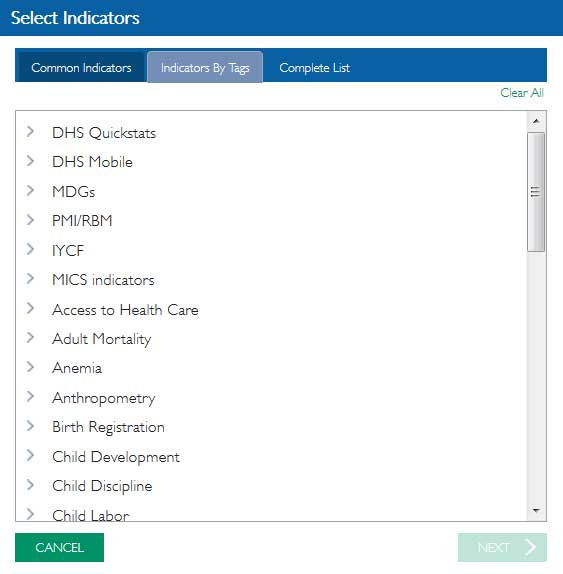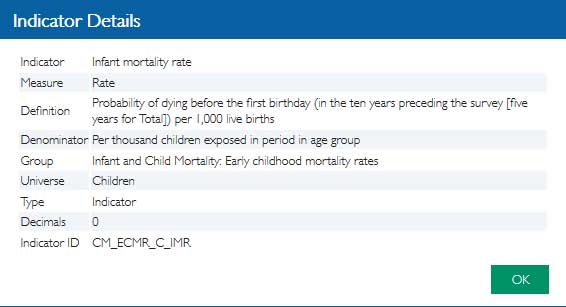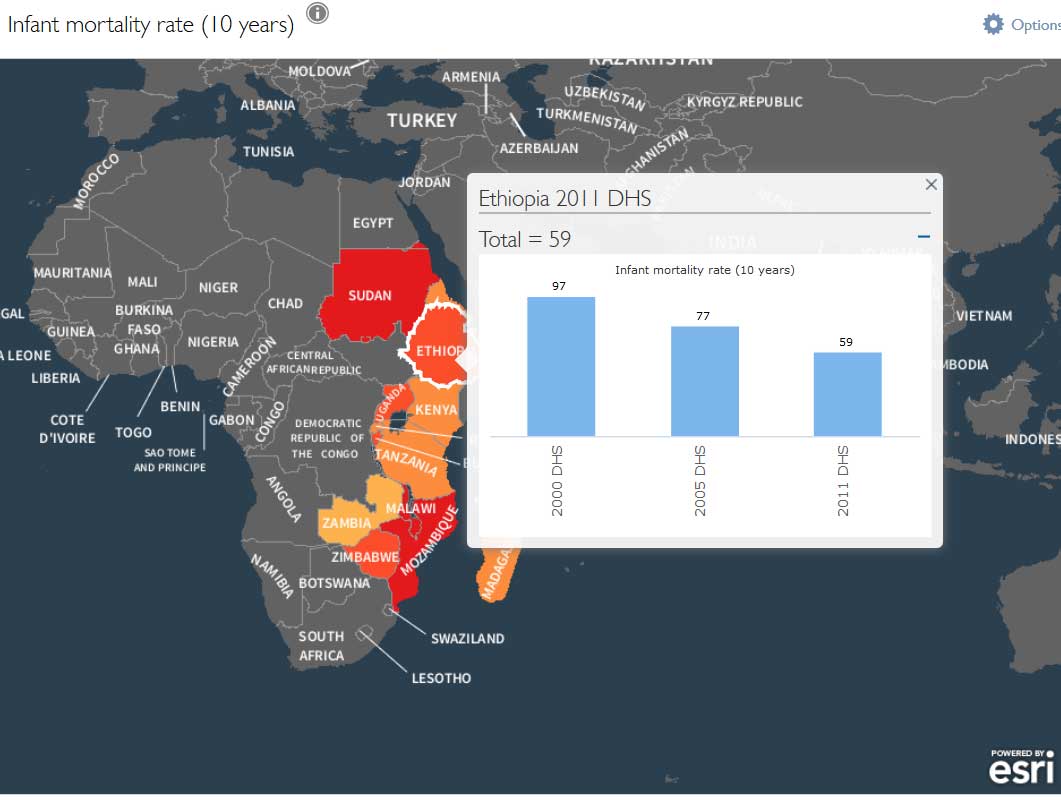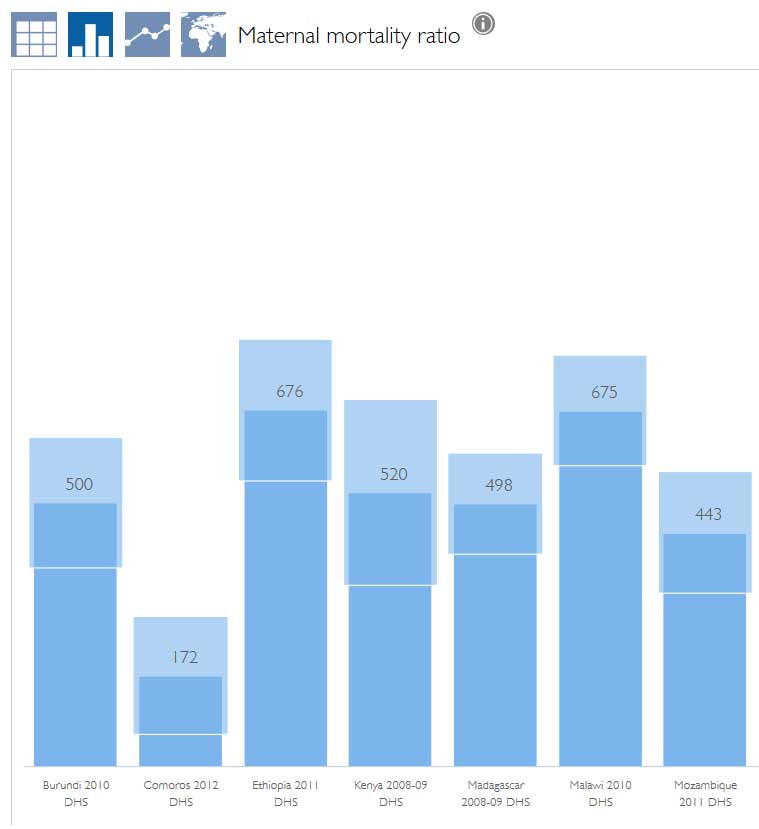STATcompiler Grows Up: 500+ New Indicators and a Mobile-Friendly Interface
In 1999, The DHS Program released the first STATcompiler. It was designed to replicate the tables in the tabulation plan of the DHS final reports at the time. Now, more than 15 years later, that database has reached “antique” status. While the user interface did get an overhaul in 2011, technology has continued to move ahead at lightning speed, with more users accessing DHS tools on mobile devices and expecting more advanced visualizations and a modern design.
In September 2015, The DHS Program released a new STATcompiler, currently as a “Beta” site. The Beta STATcompiler is built around an updated and newly harmonized database, and is experienced through a modern, mobile-friendly user interface.
The old STATcompiler tool will remain available, but new surveys and indicators will not be added to that database, so orient yourself to the new tool today!
What’s new about the new STATcompiler?
More than 500 new indicators, reflecting current DHS data collection and reporting. In particular, the STATcompiler now has indicators on female genital cutting, domestic violence, new malaria indicators, and maternal mortality ratios.
Tagging. Many people use STATcompiler to find key reporting indicators, but it is challenging to find those specific indicators in the huge list of DHS data. The new tagging functionality allows users to see curated lists, by international indicator groups such as the MDGs or specialized topics, like gender.
Metadata. DHS data users know a brief indicator title rarely captures enough technical information. Our new “indicator details” box provides full definitions, denominators, and whether the data value is a rate, a percentage, a median, or a ratio.
New visualizations. We are always looking for new and better ways to visualize DHS data. The mapping functionality in the new STATcompiler now includes a pop-up box that summarizes the national trends or range of subnational values for viewing alongside the map.
Confidence intervals. While all survey statistics have an assumed degree of error, those associated with rare events, particularly HIV prevalence and maternal mortality ratios, have relatively large confidence intervals which make interpretation of trends and comparisons especially tricky. In this new iteration of STATcompiler, the confidence intervals for HIV prevalence and maternal mortality ratio are included, as a default, in all data views.
Mobile friendly user interface. STATcompiler is now easily accessed through mobile devices, including iPhones and iPads.
Use of the public DHS Program API. The data in the Beta STATcompiler are coming straight from the database that is accessible via the public Application Programming Interface (API). This means that we are using the same data in our applications that you can use in yours.
We welcome your feedback about the Beta STATcompiler. Please note that all STATcompiler data have been recalculated and DHS staff are still in the process of verifying the accuracy and completeness of the data. If you see something you suspect is incorrect, please email us at statcompiler@dhsprogram.com.




Dear Ms. Nybro,
Can I ask you to do me a favor?
We have a problem with reproducing two figures from STATcomplier which we would use in our new paper.
the website for the two papers:
https://hivpreventioncoalition.unaids.org/wp-content/uploads/2019/01/New-Models-for-Funding-Condom-Programs_18-July.pdf
The title of the two figures are “% Condom use at last high-risk sex, Women 15–49” and “% CONDOM USE AT LAST HIGH-RISK SEX, MEN 15–49”, respectively.
The figures show the original source: STATcompilier.
We have taken a long time in searching the original source, but failed. The data is important to us. Thus, I am writing you to ask for help
I know our work may take a lot of time, we would pay for all the time you use. Just let me know how to make a payment.
We appreciate your help in this matter.
Thank you for your time and help.
Sincerely yours,
Jiman He, PhD
Liver Research Center,
Brown University
Thank you for your question. We will be emailing you shortly with a response!
Best,
The DHS Program